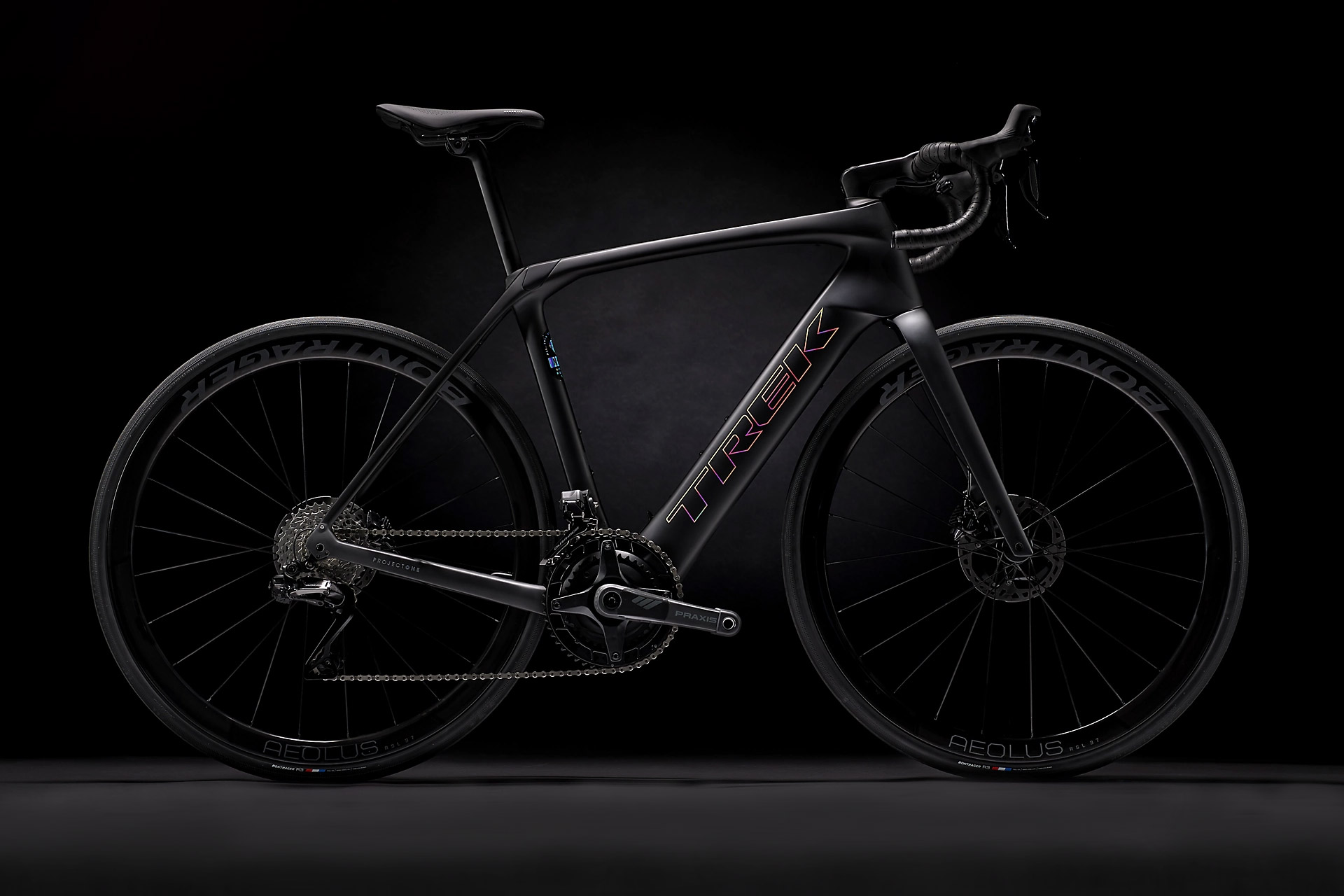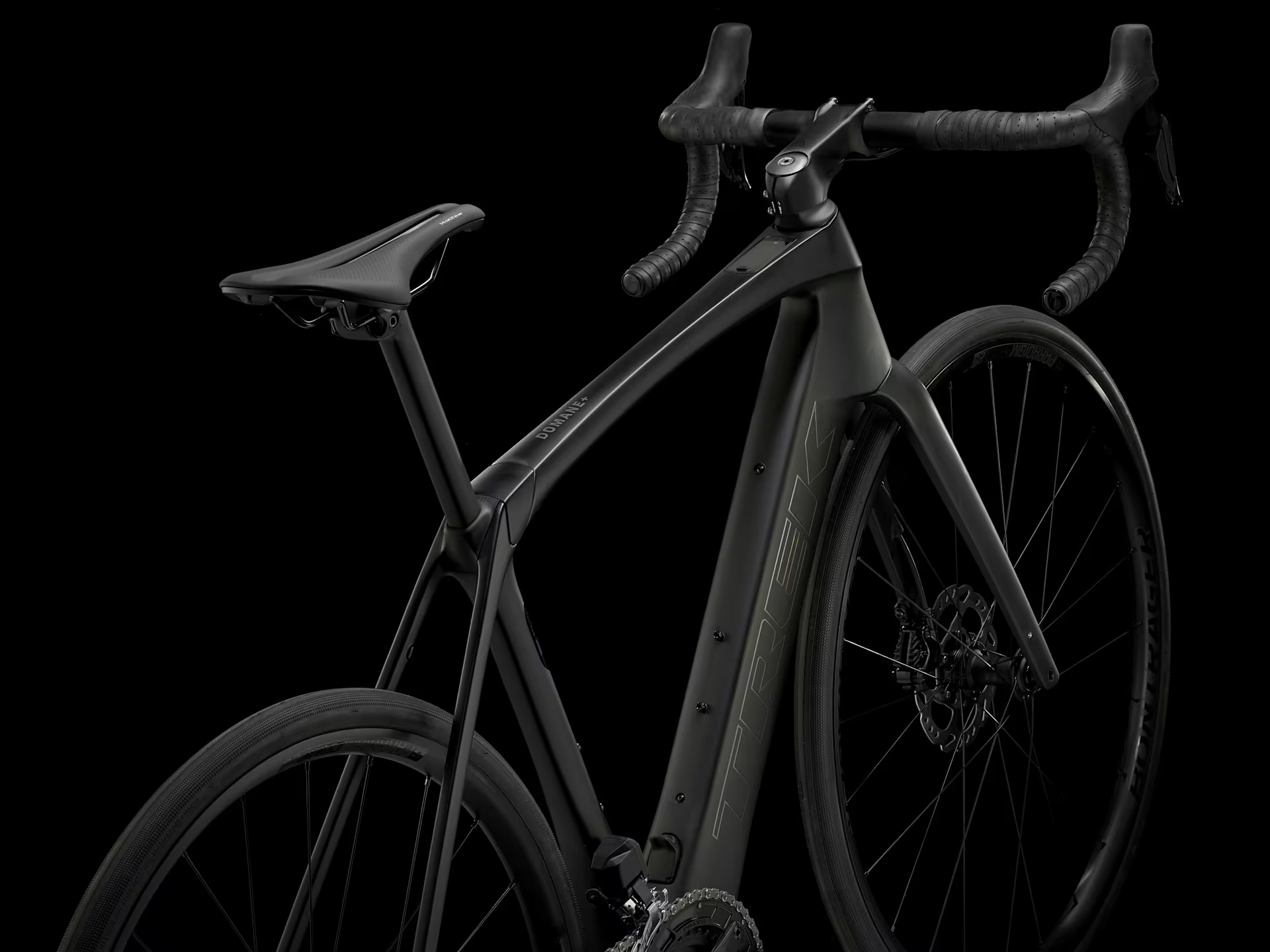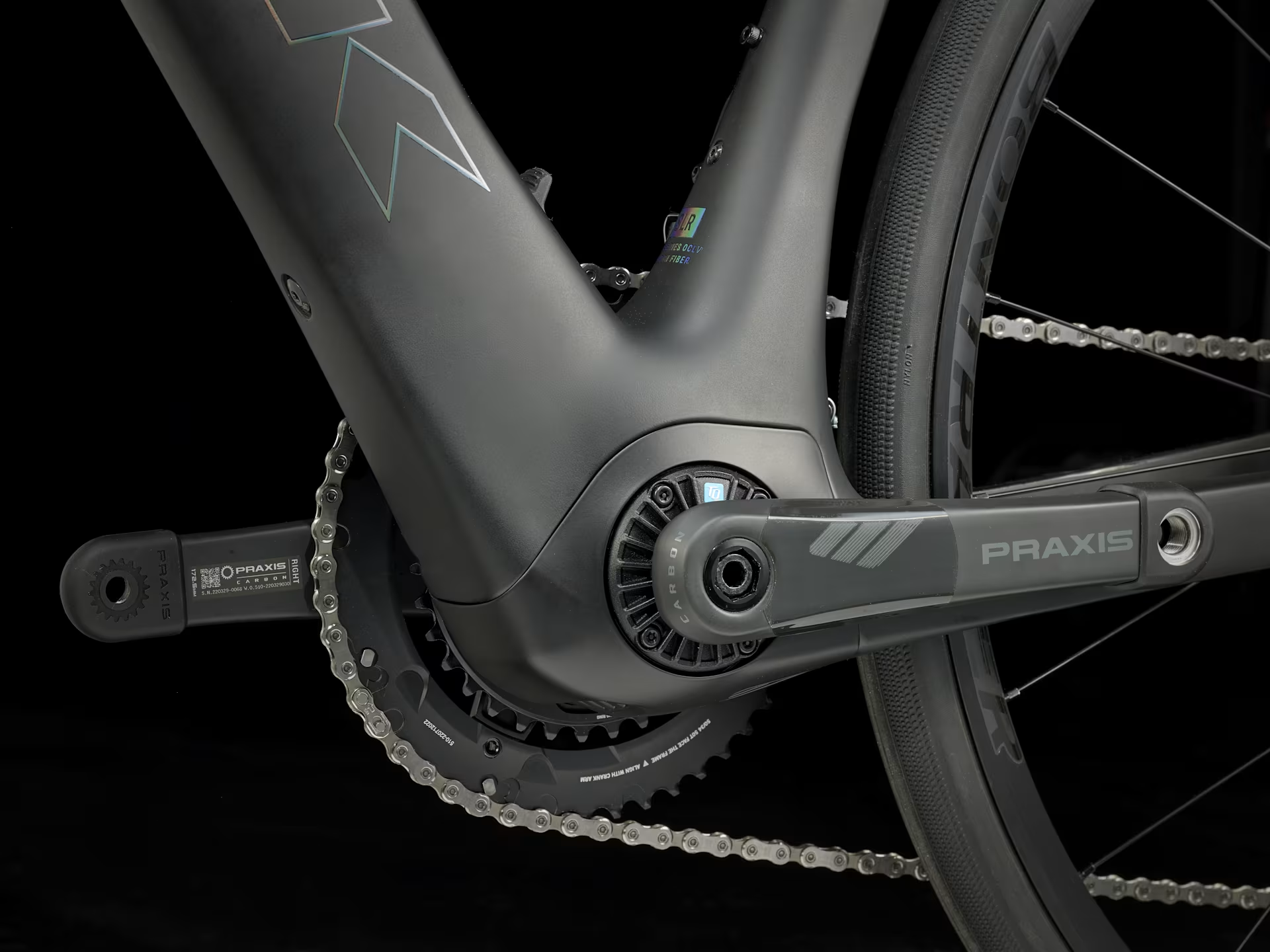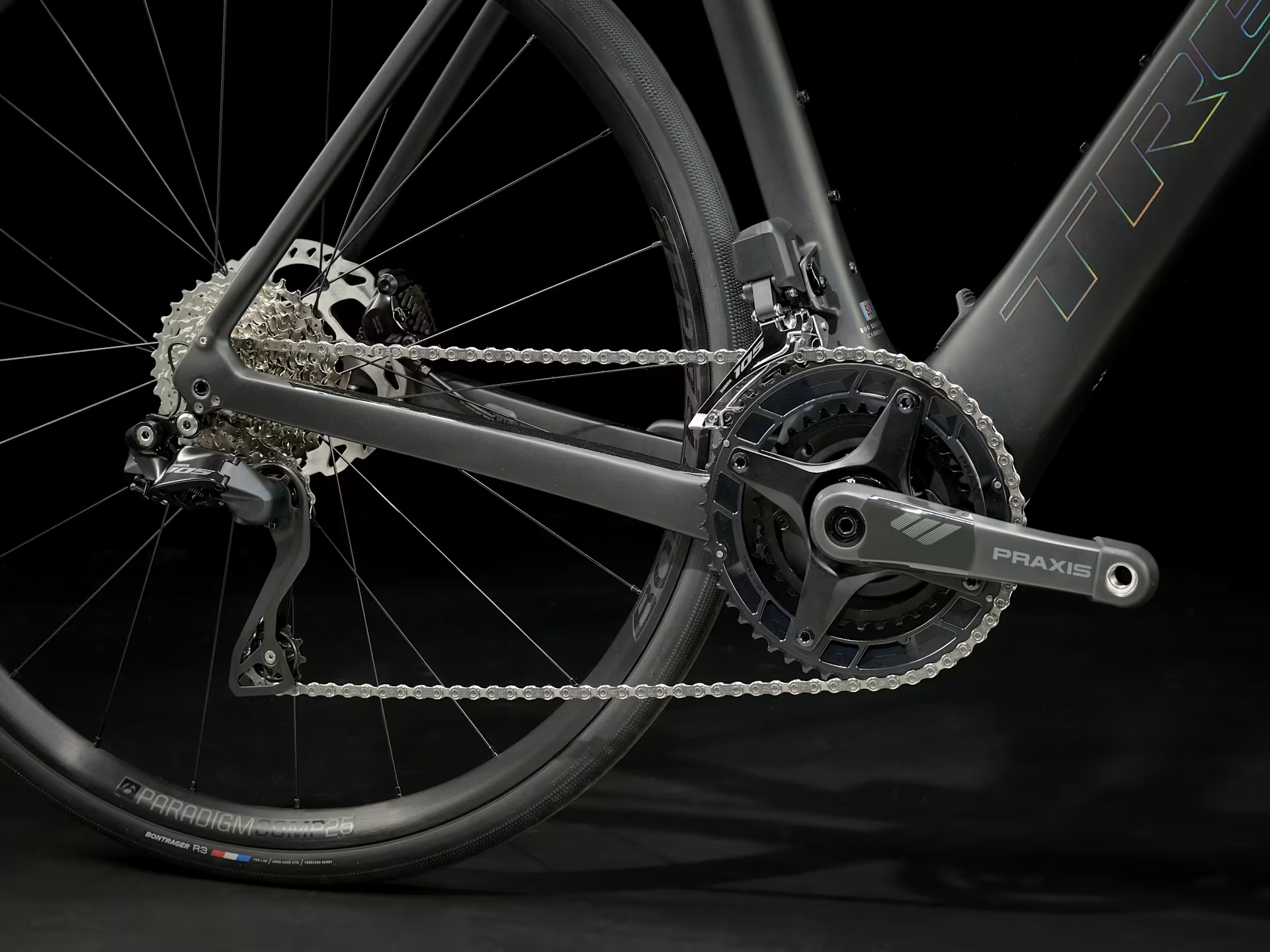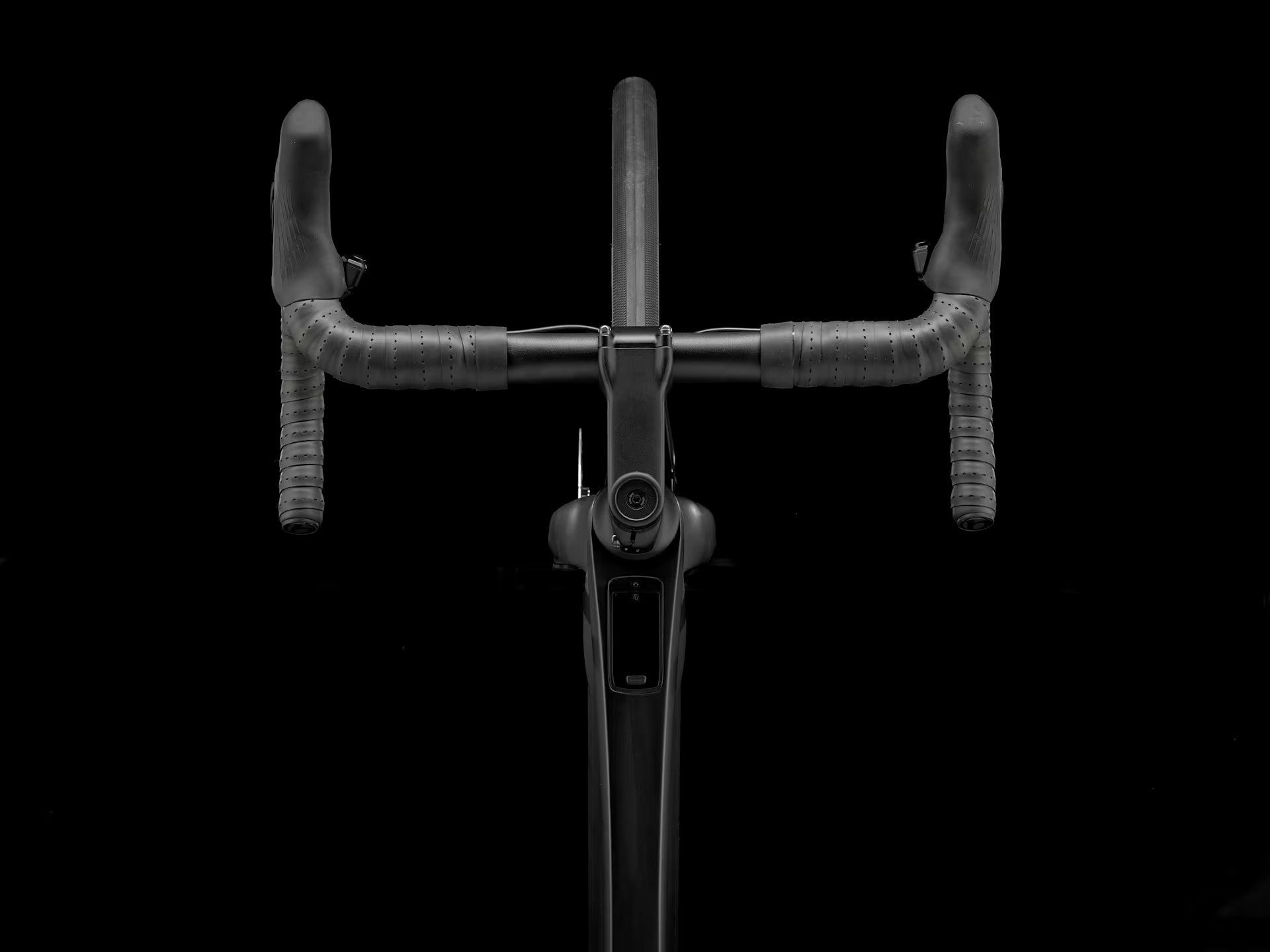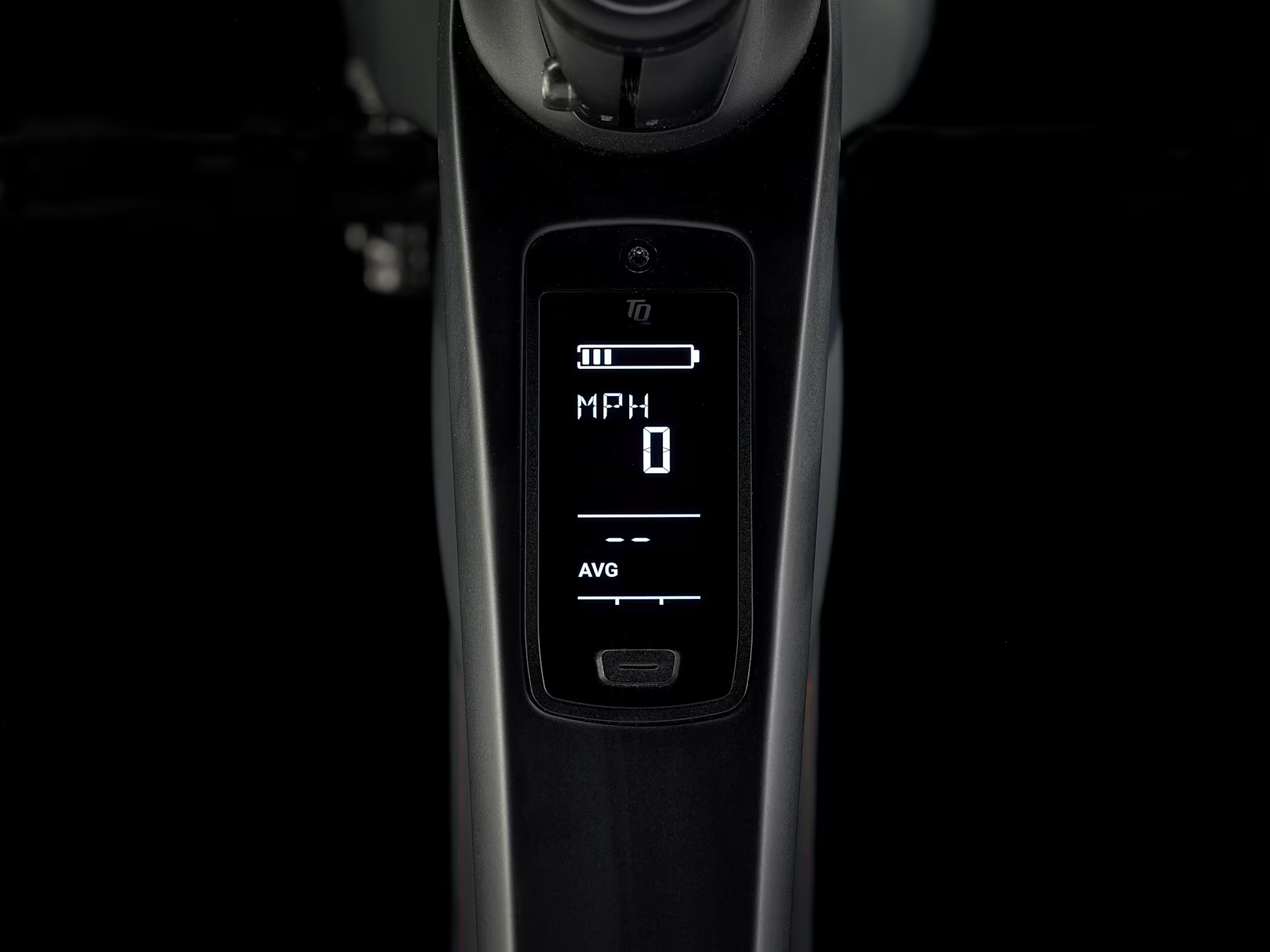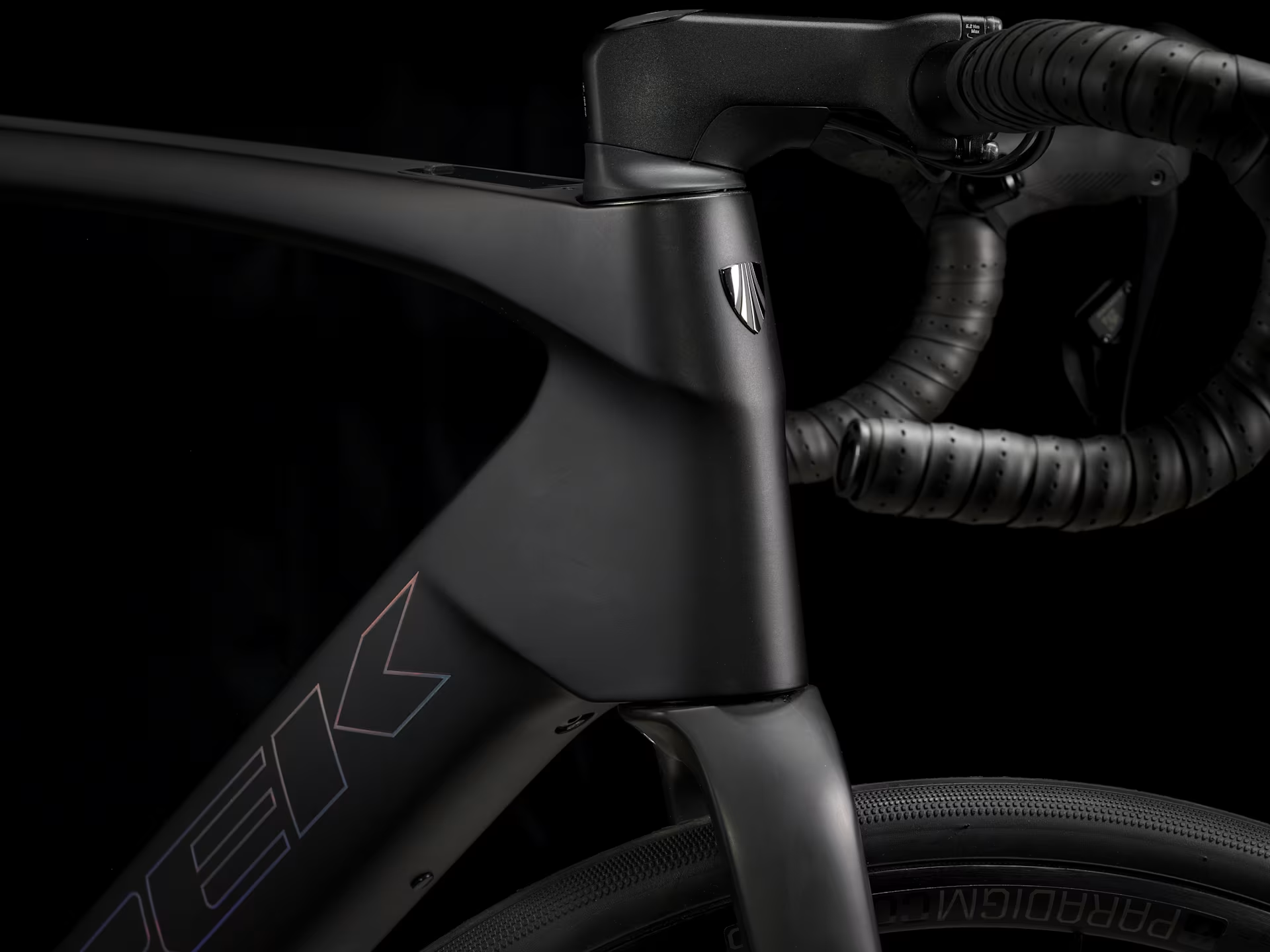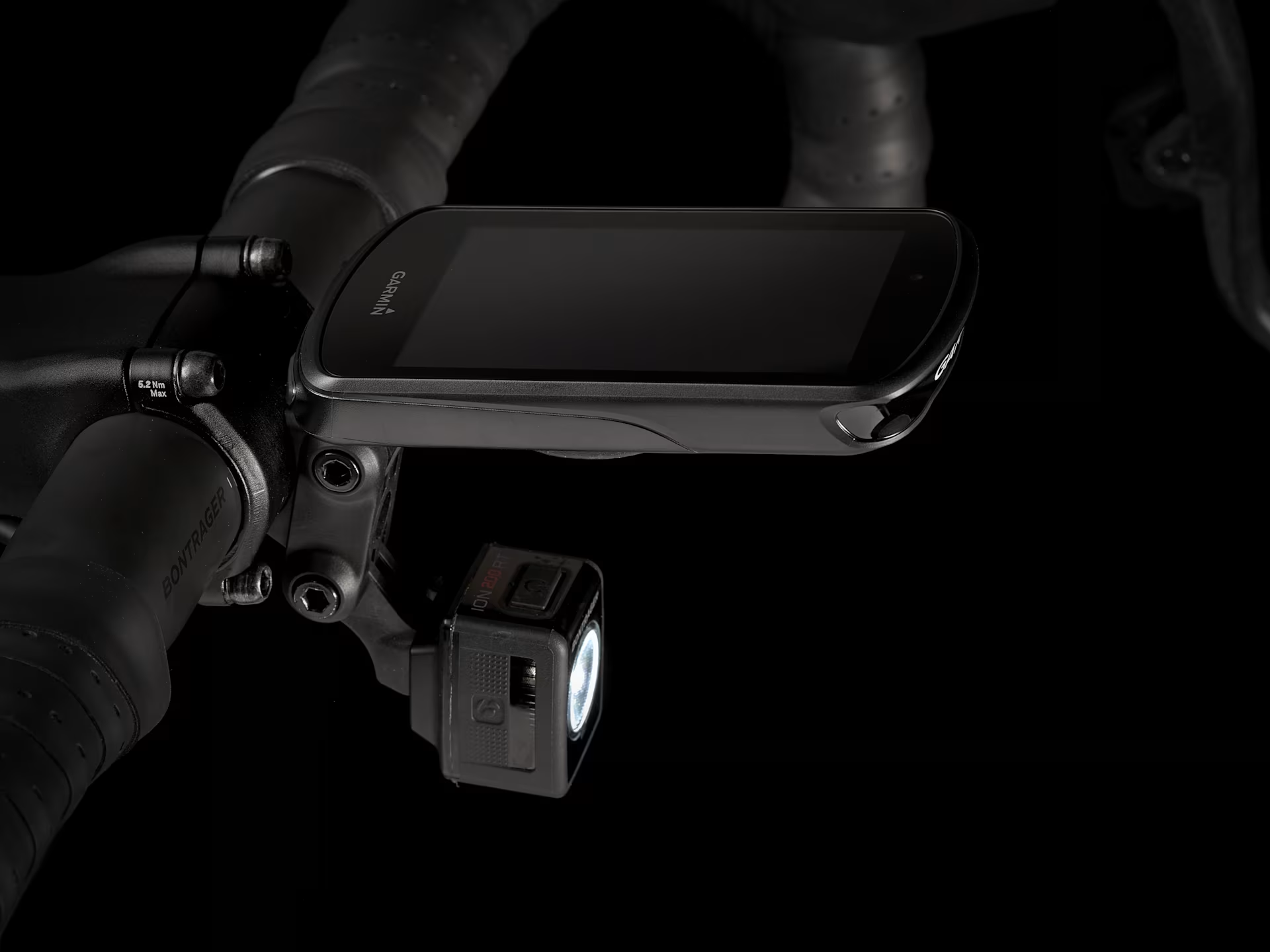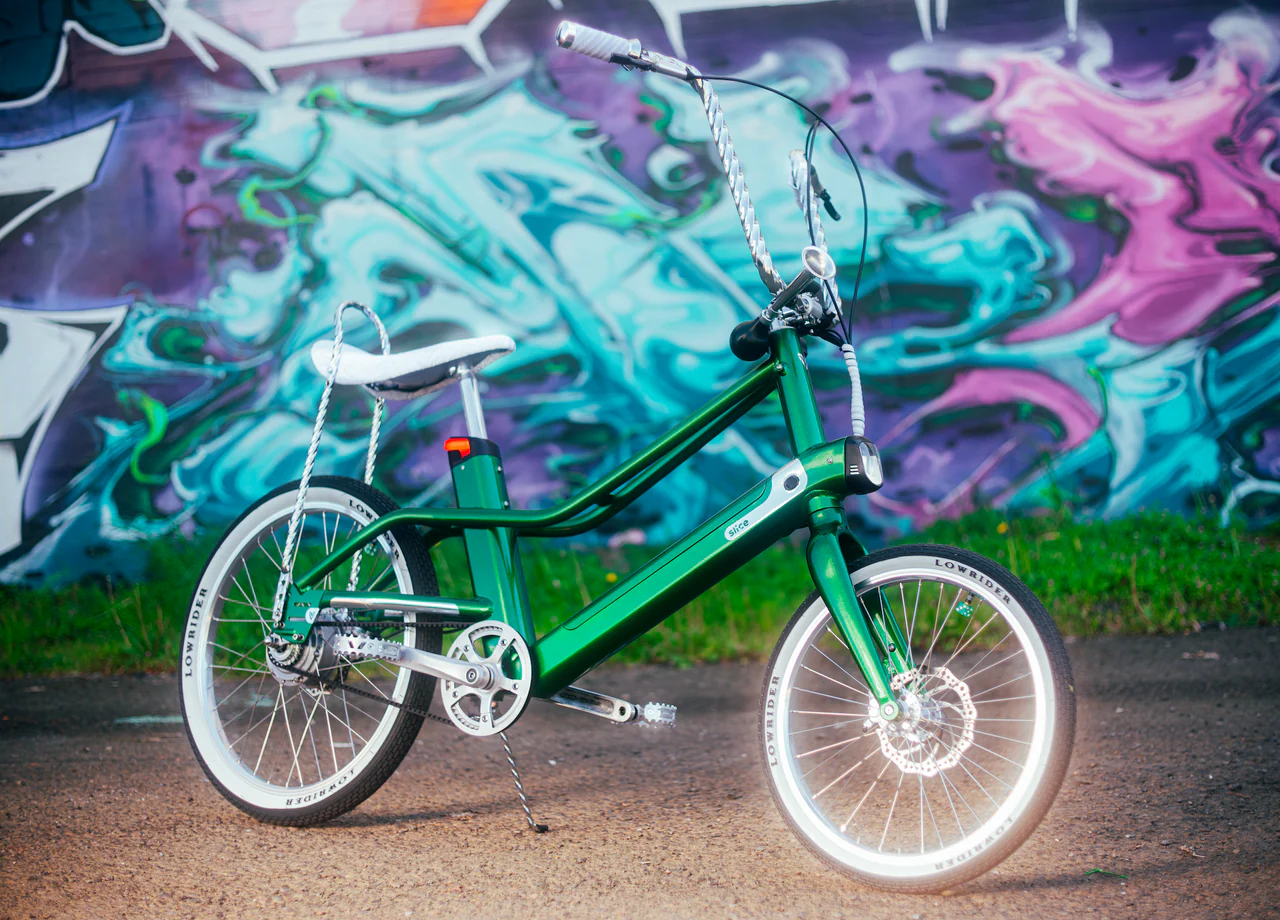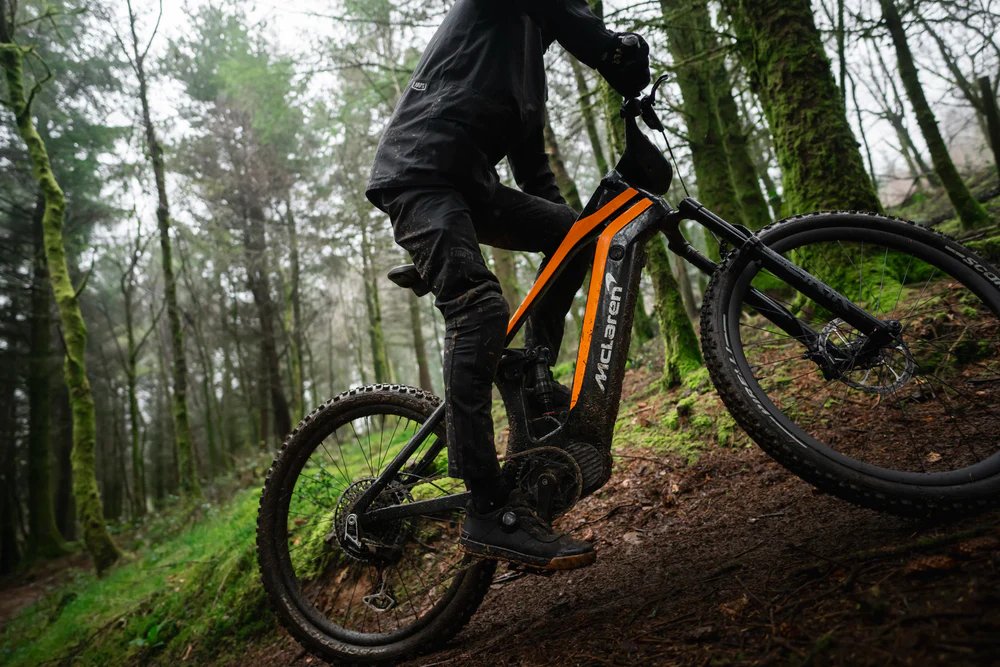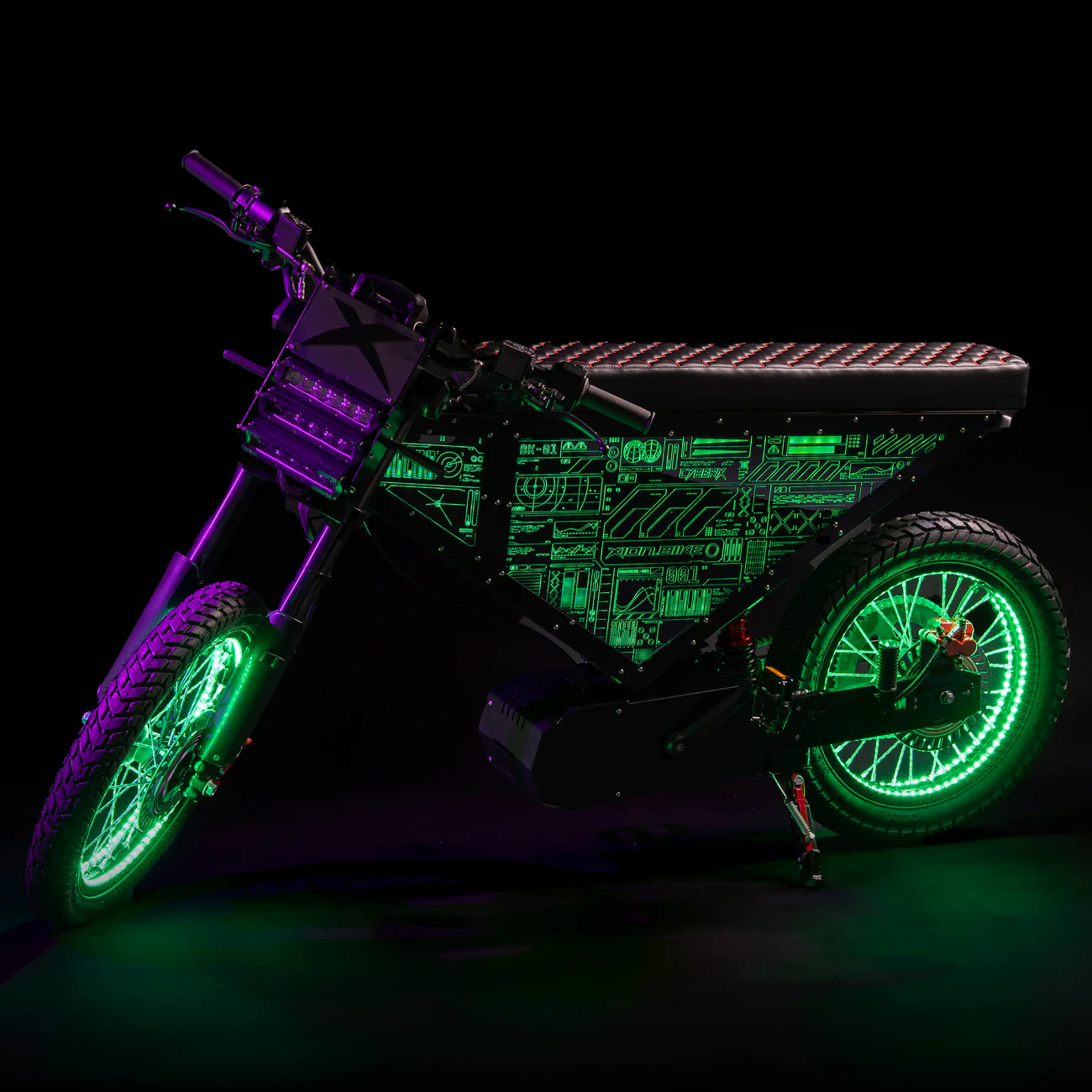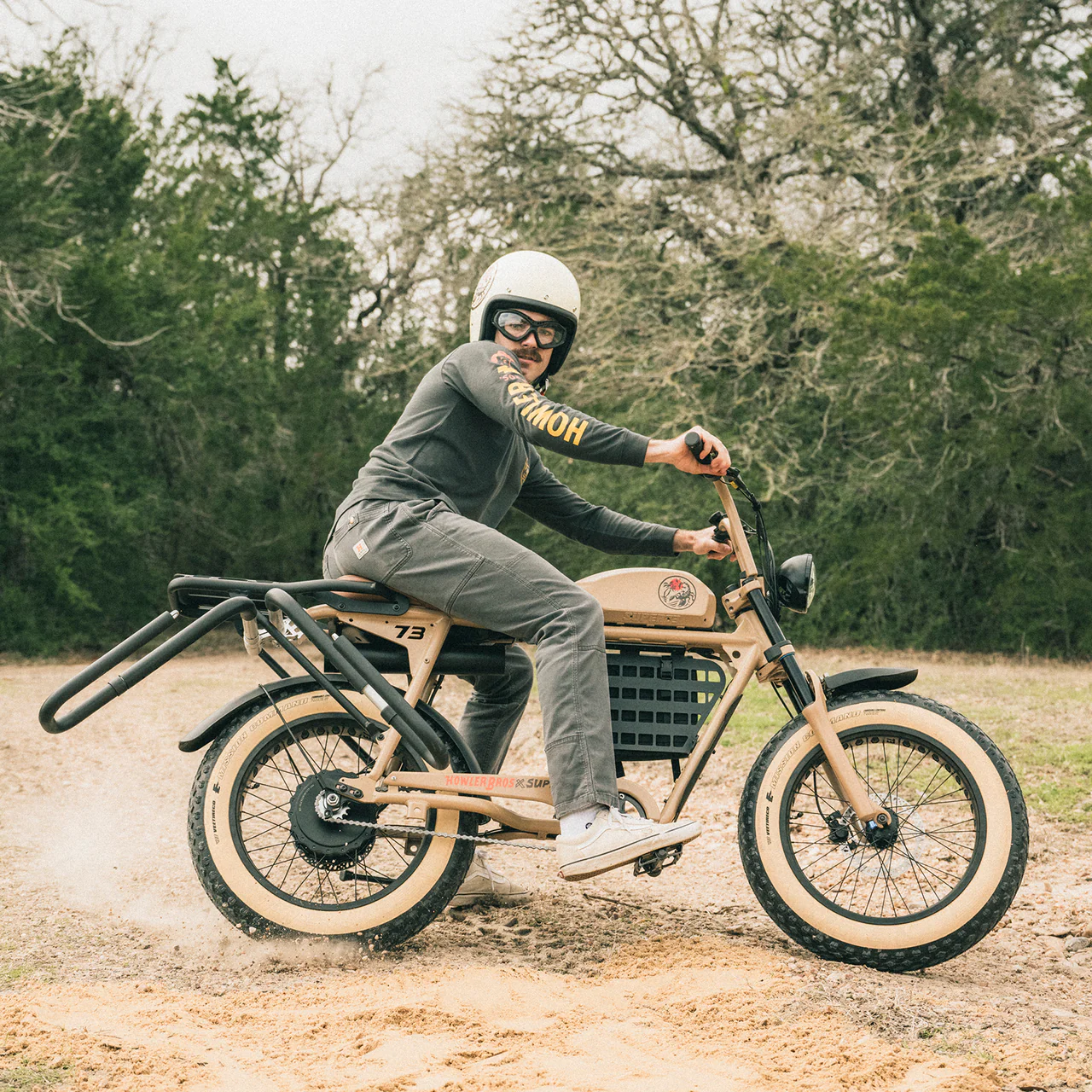
I’ve been skeptical of electric road bikes since they first appeared—most felt like compromises that sacrificed the purity of road cycling for battery-powered convenience. But after spending months with the Trek Domane+ SLR 6, I get why this approach makes sense. This isn’t a regular road bike with a motor bolted on; it’s a complete rethinking of what electric assistance can do when it’s done right.
TQ HPR50 Harmonic Pin Ring Motor Innovation
Revolutionary Motor Architecture
Here’s what makes this motor special: the TQ HPR50 harmonic pin ring system is so quiet I sometimes forget it’s there. At just 1,800g including the battery, it delivers 50Nm of torque through this clever harmonic drive that eliminates the typical e-bike motor whine. The difference in noise compared to other systems is dramatic.
Why the quiet matters: I can have normal conversations while climbing hills with full assistance. The power delivery feels natural—like having stronger legs rather than a motor pushing you along. It maintains that road bike rhythm that makes cycling feel right.
Real-world power: The 300W continuous output is perfect for road cycling needs. It shines in that 15-20 mph sweet spot where most road riding happens, helping you maintain higher average speeds without feeling like you’re cheating. The 50Nm torque handles most climbs well, though it’s not a mountain-conquering beast.
Natural Integration: Unlike motors that announce their presence through noise or vibration, the TQ system integrates so seamlessly that the riding experience feels like an enhanced version of traditional road cycling rather than electric assistance overlaid onto cycling.
Motor Control and Responsiveness
The response is immediate and proportional—push harder, get more help; ease up, assistance backs off. It reads your effort so well that the transition between your power and motor assistance is seamless. No sudden surges or weird power delivery.
Assistance Modes: Multiple assistance levels provide everything from subtle range extension to substantial climbing support, with transitions between modes feeling natural rather than abrupt. The system’s intelligence adapts to riding conditions and rider preferences.
Efficiency Optimization: Advanced algorithms optimize power delivery based on terrain, rider input, and battery status, extending range while maintaining performance when maximum assistance proves necessary.
800 Series OCLV Carbon Frame Excellence
Advanced Carbon Fiber Construction
The frame is where Trek’s decades of carbon expertise really shows. At 27.6 pounds, this is lighter than many regular road bikes I’ve owned. The handling feels completely natural—no weird weight distribution or sluggish steering that plagues heavier e-bikes.
Build quality: The OCLV carbon process creates frames that are both incredibly light and remarkably smooth. After thousands of miles, I haven’t found a single defect or issue. The compliance over rough roads is excellent while maintaining the stiffness you need for efficient power transfer.
Integration Philosophy: The frame design accommodates the TQ motor and 360Wh battery as integral components rather than afterthoughts, maintaining ideal weight distribution and preserving the aesthetic lines that define premium road bikes.
Stiffness and Compliance Balance: The carbon layup schedule provides bottom bracket stiffness for efficient power transfer while maintaining vertical compliance that smooths road irregularities—crucial for the longer rides that electric assistance enables.
Battery Integration and Aesthetics
The 360Wh battery disappears into the downtube so well that people don’t realize it’s an e-bike until they see the small display. The integration is flawless—no ugly battery bulges or awkward mounting points.
Weight Distribution: The battery placement maintains ideal weight distribution that preserves handling characteristics while the removable design enables convenient charging and security.
Range Expansion: The optional 160Wh range extender integrates into the frame design, extending total capacity to 520Wh for adventures exceeding the base 60-mile range.
IsoSpeed Endurance Technology Integration
Vibration Isolation Innovation
IsoSpeed is Trek’s secret weapon for comfort. The seat tube flexes independently to absorb road chatter while keeping the bottom bracket area rock solid. On long rides—and with electric assistance, you’ll do longer rides—this comfort tech becomes really valuable.
Comfort Enhancement: The IsoSpeed system reduces rider fatigue by isolating road vibrations that would otherwise transfer through the frame to the rider. This technology proves especially valuable during the extended rides that electric assistance makes possible.
Performance Preservation: Unlike passive suspension systems that can compromise pedaling efficiency, IsoSpeed maintains the direct power transfer essential to road bike performance while providing compliance where it matters most.
Tire Clearance and Versatility
The 40mm tire clearance opens up possibilities beyond pure road riding. I’ve run 35mm tires for mixed-surface adventures, and the standard 32mm Bontragers strike a perfect balance of speed and comfort for regular road use.
Surface Adaptability: Larger tire options enable confident riding on gravel, rough pavement, and mixed surfaces, expanding the bike’s capability beyond traditional road cycling limitations.
Rolling Efficiency: The standard 32mm tires balance rolling resistance with comfort, while the clearance for larger options provides future versatility as riding needs evolve.
Shimano 105 Di2 Wireless Drivetrain Excellence
Electronic Shifting Precision
The wireless 105 Di2 is brilliant, especially on an e-bike. Shifts are instant and precise even under full motor power—something mechanical shifting can struggle with. No cables means cleaner aesthetics and less maintenance.
Why wireless matters: I’ve ridden this through everything from rain to freezing temperatures, and shifting performance never wavers. Plus, the clean lines make the bike look even more like a traditional road machine.
Load Handling: Unlike mechanical shifting systems that can struggle under the high torque loads of electric motors, the Di2 system shifts consistently regardless of power output, ensuring smooth operation during motor-assisted climbs.
Customization Capability: The electronic system enables unlimited customization through the Shimano E-Tube app, allowing riders to optimize shift points, multi-shift patterns, and system behavior for personal preferences.
Gear Range and Performance
The 12-speed cassette provides gear ratios optimized for both electric-assisted climbing and high-speed descending, ensuring appropriate gearing across the full range of road cycling scenarios.
Climbing Capability: Lower gear ratios accommodate steep gradients while the motor assistance enables riders to tackle climbs previously beyond their capability.
High-Speed Performance: The upper gear ratios support speeds above the 28 mph assistance cutoff, ensuring pedaling efficiency when riding at or above motor assistance limits.
Bontrager Component Integration
Aeolus Elite 35 Carbon Wheels
The Bontrager Aeolus Elite 35 carbon wheels provide the aerodynamic efficiency and lightweight performance essential to maintaining road bike character while accommodating the additional motor and battery weight.
Aerodynamic Efficiency: The 35mm rim depth balances aerodynamic performance with crosswind stability, crucial for maintaining control during the higher average speeds that electric assistance enables.
Weight Optimization: Carbon construction minimizes rotational weight while providing the stiffness necessary for efficient power transfer from both rider and motor.
Tire Selection and Performance
The Bontrager R3 Hard-Case Lite 32mm tires balance rolling resistance, comfort, and puncture protection—essential considerations for the longer rides that electric assistance makes practical.
Rolling Efficiency: The tire compound and construction optimize rolling resistance while the 32mm width provides comfort advantages over traditional narrow road tires.
Puncture Protection: Hard-Case Lite technology provides puncture resistance without significant weight penalty, crucial for riders venturing beyond traditional road cycling distances.
Real-World Performance Assessment
Range and Efficiency Analysis
I’ve put this bike through everything from daily commutes to 100+ mile adventures, and it consistently delivers. The real-world performance matches Trek’s claims better than most e-bikes I’ve tested.
Range reality: The 60-mile base range is honest—I consistently hit that number with mixed assistance levels. If you’re strategic about power use and ride in eco mode on flats, you can stretch it further.
Range extender game-changer: Adding the 160Wh extender opens up epic adventure possibilities. I’ve done 120+ mile rides with confidence, tackling routes that would have been suffer-fests on a regular road bike.
Charging Practicality: The 2-hour charging time accommodates overnight charging cycles, while the removable design enables convenient indoor charging and workplace charging scenarios.
Climbing and Acceleration Performance
The 50Nm motor output provides meaningful assistance for most road cycling scenarios, though limitations become apparent on steep gradients with heavier riders or when climbing at high intensities.
Moderate Climb Performance: On typical road climbs (6-8% grades), the assistance lets you maintain a sustainable cadence and conversation. You still work, but you arrive at the top fresher and ready for more.
Steep climb reality: On really steep stuff (10%+), the 50Nm torque starts to feel limited, especially if you’re a bigger rider or carrying gear. It’s not a mountain-crushing machine, but it handles normal road climbs beautifully.
Group Riding Integration
Group riding works perfectly. The assistance is so natural that other riders don’t notice unless I tell them. I can maintain pace line etiquette and contribute to group efforts without feeling like I’m using unfair advantage.
Pace Line Capability: The motor’s quiet operation and natural feel enable participation in pace lines without disrupting group dynamics, while the assistance helps riders maintain contact with stronger groups.
Speed Transition: Above the 28 mph assistance cutoff, the bike’s lightweight construction ensures that pedaling efficiency remains high, enabling contribution to group efforts at racing speeds.
Competitive Analysis and Market Position
Premium E-Road Comparison
In the premium e-road space, this bike stands out for being genuinely light and handling like a real road bike. Most competitors feel heavier or more artificial in their assistance delivery.
vs. Specialized Turbo Creo SL: Both are excellent, but the Trek feels more natural to me. The Specialized has slightly different motor tuning and geometry, but they’re close enough that test riding both is essential.
Cervélo Rouvida: Provides alternative geometry and component specifications, usually with different motor systems and varying approaches to integration aesthetics.
Unique Positioning: Trek brings IsoSpeed technology and OCLV carbon expertise not available from competitors, while the TQ motor system provides distinctive performance characteristics.
Value Proposition Assessment
At $7,499, this isn’t cheap, but you get what you pay for: premium carbon, innovative motor tech, and high-end components. It’s priced for serious cyclists who want the best, not those shopping on value alone.
Component Value: Shimano 105 Di2, carbon wheels, and TQ motor system represent substantial individual value, with the frame technology and integration completing a package that justifies premium positioning.
Long-Term Investment: Trek’s lifetime frame warranty and proven durability suggest reasonable long-term value for riders who prioritize reliability and performance longevity.
Target User Analysis and Recommendations
Ideal User Profile
This bike is perfect for experienced road cyclists who want to extend their range and capabilities without giving up the feel of real road riding. If you love road cycling but want to ride longer, climb easier, or keep up with faster groups, this is it.
Experience Requirements: The bike benefits from riders who understand road cycling techniques and can optimize the motor assistance to complement their riding style rather than depend on electric power.
Performance Priorities: Ideal users prioritize weight optimization, handling precision, and integration aesthetics over maximum motor power or range, seeking electric assistance that enhances traditional road cycling rather than replacing it.
Use Case Applications
Epic ride enabler: I’m tackling routes that would have required all-day sufferfests on a regular bike. The assistance lets me explore farther while still getting a great workout and enjoying the ride.
Climbing Assistance: Motor support makes challenging climbs accessible while maintaining the reward of earning summit achievements through effort and skill.
Group Ride Integration: The assistance enables riders to participate in faster groups or maintain contact during challenging sections while preserving traditional road cycling etiquette.
Commuting Enhancement: For riders using road bikes for transportation, the assistance reduces arrival fatigue while maintaining exercise benefits and cycling enjoyment.
Long-Term Ownership Considerations
Service and Support Infrastructure
One concern: the TQ motor system is still relatively new, so finding service expertise might be challenging in some areas. Trek’s dealer network helps, but not every shop will have TQ experience if something goes wrong.
Warranty Coverage: Trek’s lifetime frame warranty provides exceptional protection, while the 2-year electrical component coverage offers reasonable protection for the motor and battery systems.
Parts Availability: Long-term parts availability benefits from Trek’s market position and dealer network, though TQ motor components may require specific sourcing channels.
Technology Evolution Impact
The rapid advancement of e-bike motor and battery technology raises questions about long-term relevance, though the premium component selection and proven frame technology provide lasting value.
Upgrade Potential: The modular component selection allows future upgrades to drivetrain and other wear items while maintaining the frame and motor investment.
Battery Replacement: The removable battery design enables future battery upgrades as technology improves, extending the bike’s useful life beyond the original battery capacity.
Final Assessment and Recommendation
After extensive testing, the Domane+ SLR 6 delivers exactly what it promises: genuine road bike feel with meaningful electric assistance. This isn’t a compromise—it’s advancement that enhances rather than replaces the road cycling experience.
Perfect for: Experienced road cyclists who want to ride longer, climb easier, or join faster groups without giving up the pure road bike experience.
Look elsewhere if: You need maximum climbing power for steep terrain, have budget constraints, or prioritize maximum range over lightweight performance.
My honest take: This is the best electric road bike I’ve ridden. It enhances the road cycling experience without compromising what makes road riding special. If you have the budget and want electric assistance that feels natural, nothing else comes close.
Available Now
Specifications
Pros
- + Trek's lightest e-bike at 27.6 lbs maintains road bike handling characteristics
- + TQ HPR50 motor system is exceptionally quiet and provides natural assistance feel
- + Shimano 105 Di2 wireless shifting delivers flawless precision under power
- + 60-mile range with fast 2-hour charging supports long-distance adventures
- + IsoSpeed technology smooths rough roads while maintaining pedaling efficiency
- + Discreet integration maintains traditional road bike aesthetics and balance
- + 800 Series OCLV Carbon frame provides race-level stiffness and compliance
- + Range extender option extends capability to 90+ miles for epic rides
- + 28 mph assistance supports higher average speeds and group ride compatibility
- + Trek's legendary build quality ensures long-term reliability and performance
Cons
- - Lower 50Nm torque output may struggle on steep climbs with heavy riders
- - 360Wh battery capacity smaller than some competing e-road bikes
- - TQ motor system requires specialized dealer knowledge for service
- - Range extender adds complexity and additional investment
- - Electronic shifting requires battery management and periodic charging
- - Premium positioning limits accessibility for budget-conscious riders


